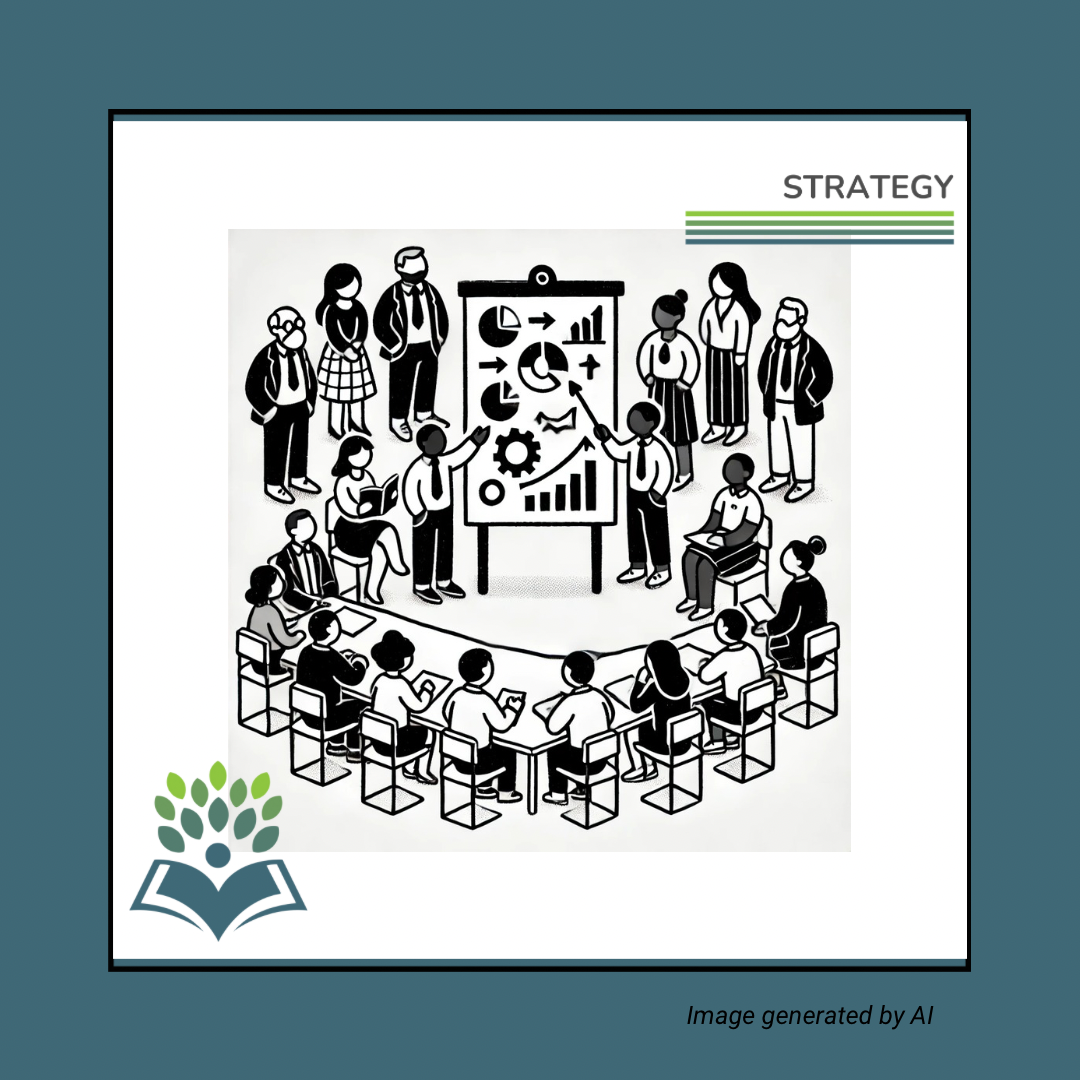Strategy is a Road Map
Strategy is one of the Four Foundations in the Nonprofit Planner 6+4 system. Combined with the (1) Big Questions highlighting business purpose, (2) your organizational Ethos and (3) your Positioning in the market you serve, number (4) Strategy provides direction and a road map for getting you where you want to go.
Typically owned by the Board of Directors, Strategy includes your multiyear strategic plan, your annual goals, your one-year plan and even your operating budget. The board and leadership staff will work together to create the strategic plan. The board approves the strategic plan. And then, the staff takes the plan and runs with it, operating the organization consistent with the goals of the plan. With that direction in hand, staff can choose and prioritize initiatives, set specific project goals, build an operating plan and establish a budget for the first year of the strategic plan.
The strategic planning process happens every three to five years, but Strategy does not stand alone. The process invites you to revisit the other three elements of the Four Foundations (Big Questions, Ethos, Positioning) as you devise your Strategy and determine whether you should focus on “business as usual” or maybe change it up. Bottomline, your organization always must be working in service to your mission (part of Ethos). Your Strategy lays out exactly how you hope to do that. The strategic planning process is an opportunity to revisit whether or not the strategy currently in place is working - and even whether the need for your organization’s mission has changed.
Put simply, your strategic plan will start with an analysis of where you are today relative to your mission and prior strategic goals. It will review community need, competitors, and the external environment. It offers an opportunity for honest and vulnerable discussion as to whether you are living up to your brand promises and impacting your mission. It will set new goals for where you want to be in three (or five) years. Finally, it will prioritize the focus areas that will drive you towards those goals.
There are plenty of frameworks, models, project plan templates, and valid methodologies for setting a new strategy and evaluating an old one. Some will work better than others for you, depending on where you are in your organizational life cycle - and whether you are doing well, in crisis, or somewhere in between.
You can hire an external consultant, or do the work in-house, but only if you have an experienced facilitator who can objectively guide the process. Confirmation bias is a thing, and too many people look for affirmation of “the way we’ve always done it,” consciously or not. A good facilitator will call that out. Your strategic plan facilitator also will navigate the tricky balance between input from your board (often aspirational) and input from your staff (often tactical). You'll also want to make sure you can step back far enough from your organization that you are open to new perspectives and new information. Sometimes that literally means going off-site to do the strategic planning work.
Some firms spend almost a year devising a strategic plan, especially if it is meant to last five years. Usually, 4-6 months is the right timeline to develop a sound 3-year plan.
Your Strategic Plan is an important governance AND management tool. It is particularly valuable when onboarding new members of the board so that they can get acclimated to the organization’s mission, business model and priorities. Staff will rely on it as a tool for evaluating opportunities that arise between strategic planning processes. Without a documented and approved set of priorities, it is difficult in the moment to decide how to proceed whenever you are presented with a “good idea.”
Finally, some funders will ask to see your strategic plan as part of a grant evaluation process. Having one in place and abiding by a clear Strategy shows adherence to best practice governance - and it shows you intentionally created a road map to guide you to where you want to go.


